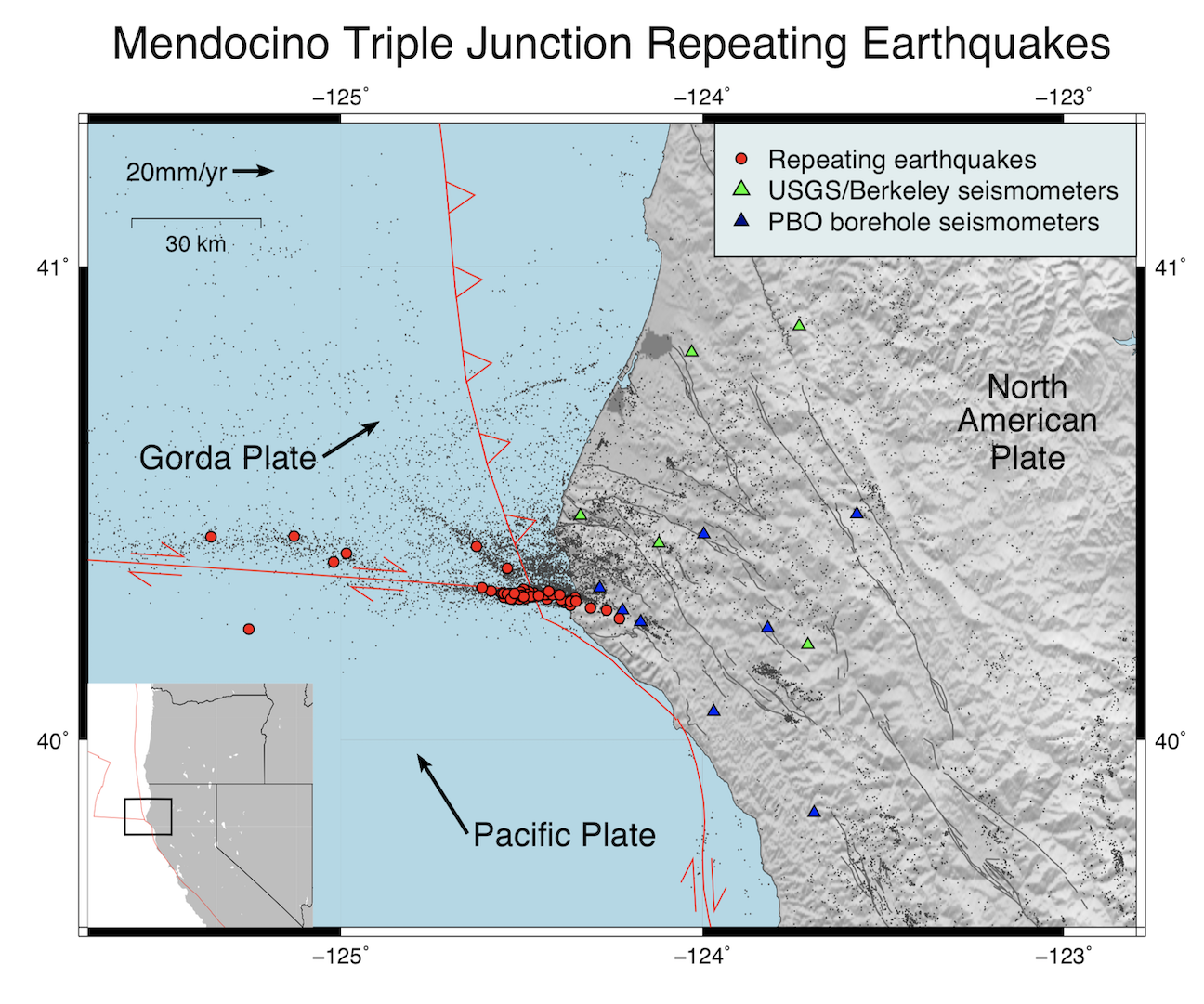
 |
|

Figure: Location of CREs (red circles) detected at the Mendocino Triple Junction. The cluster of CREs on the Mendocino Fault Zone suggest that aseismic slip is occurring there. The 13 seismometers used to detect CREs in the study are shown in blue and green triangles; they consist of 5 broadband sensors and 8 PBO short-period borehole instruments.
| Project Summary | The Mendocino Triple Junction (MTJ) is a seismically active region at the transition between the San Andreas Fault system, the Mendocino Transform Fault, and the Cascadia Subduction Zone in Northern California. The triple junction itself is located offshore, making it difficult to study using traditional land-based methods. In this project, we document the occurrence of characteristically repeating earthquakes (CREs) near the MTJ and interpret them as indicators of aseismic creep. The CRE data implies a creep rate of ~3 cm/yr on the downgoing extension of the Mendocino Transform Fault, consistent with other estimates of low coupling on oceanic transform faults. We also find repeating earthquakes on the southern margin of the North American accretionary wedge. This project demonstrates the ability of CREs to monitor aseismic creep and its time-dependent features in a plate boundary region outside the coverage of current geodetic networks. |
| Tools | Characteristically Repeating Earthquakes |
| Geographic Location | Mendocino Triple Junction, Northern California |
| Project Duration | 2016-2019 |
| Group Members Involved | Kathryn Materna, Taka'aki Taira, Roland Bürgmann |
| More Information | GRL Paper: Materna et al., 2018 |
|
|